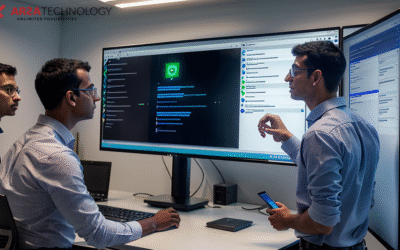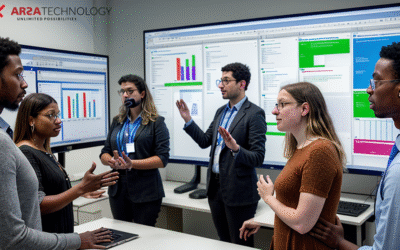Introduction: Overcoming High Identity Verification Costs in the Fintech Industry
The financial technology (fintech) sector is at the forefront of digital innovation, constantly striving to deliver seamless, secure, and accessible services. A cornerstone of this digital transformation is robust identity verification, particularly during customer onboarding. However, for many fintech companies, the pursuit of ironclad security often collides with the challenge of high identity verification costs. These expenses don’t just encompass the direct transactional fees; they extend to the hidden complexities and long-term commitments associated with implementing and maintaining advanced biometric security measures.
In an era where digital fraud is increasingly sophisticated, ensuring that a user is a real, live person – and not a presentation attack using a photo, video, or mask – is paramount. This is where Face Liveness Detection becomes indispensable. The critical decision for fintech leaders and developers then becomes: should we build this complex technology in-house, or should we leverage a specialized, high-performance API solution? This article delves into a comprehensive cost-benefit analysis, comparing the strategic advantages of adopting ARSA Technology’s Face Liveness Detection API against the often underestimated total cost of ownership (TCO) of in-house development, specifically tailored for the secure digital onboarding needs of the fintech industry.
The Imperative of Robust Liveness Detection in Fintech
Digital onboarding is the gateway to financial services. It’s where trust is established, and the first line of defense against fraud is deployed. In this critical phase, traditional identity checks are no longer sufficient. Sophisticated fraudsters employ various presentation attack methods (PAs) to bypass security systems, ranging from printed photos to deepfake videos. Without a reliable mechanism to detect these attacks, fintech platforms face significant financial losses, reputational damage, and regulatory penalties.
Face Liveness Detection technology is designed precisely to counter these threats. It uses advanced artificial intelligence and machine learning algorithms to verify that the person interacting with the system is a live, present individual, not an imposter. For fintechs, this means:
* Enhanced Security: Protecting customer accounts and company assets from identity theft and fraud.
* Regulatory Compliance: Meeting stringent Know Your Customer (KYC) and Anti-Money Laundering (AML) requirements.
* Improved User Experience: Offering a smooth, quick, and secure onboarding process that builds customer trust.
ARSA Technology’s Face Liveness Detection API offers a state-of-the-art solution, engineered to provide superior anti-spoofing capabilities. To see the API in action, test the Liveness Detection API and experience its accuracy firsthand.
The Hidden Costs of In-House Face Liveness Development
At first glance, building an in-house Face Liveness Detection system might seem like a way to maintain control and customize solutions. However, the reality of such an undertaking in the complex world of AI and biometrics reveals a multitude of hidden and often prohibitive costs for fintech companies.
- Exorbitant Initial Investment: Developing a robust liveness detection system from scratch requires a substantial upfront investment. This includes:
- * Talent Acquisition: Hiring a specialized team of AI/ML engineers, computer vision experts, data scientists, and security architects. These are highly sought-after professionals commanding premium salaries.
- * Research & Development (R&D): Extensive R&D is needed to develop and refine algorithms, gather diverse datasets for training, and build a resilient system against evolving spoofing techniques. This phase can take months, if not years.
- * Infrastructure: Setting up and maintaining the necessary hardware, cloud resources, and specialized computing power for AI model training and inference.
- Protracted Development Cycles and Delayed Market Entry: The complexity of biometric AI means that development timelines are often long and unpredictable. Delays can result in significant opportunity costs, as competitors might launch similar features sooner, capturing market share. For fintechs, speed to market with secure solutions is a critical competitive differentiator.
- Ongoing Maintenance, Updates, and Refinements: A liveness detection system is not a “set it and forget it” solution. Fraudsters constantly innovate, requiring continuous updates and refinements to the detection algorithms. This necessitates:
- * Continuous Monitoring: Dedicated teams to monitor performance, identify new attack vectors, and collect new data.
- * Algorithm Refinement: Regular updates to AI models, requiring retraining with fresh data and computational resources.
- * Security Patches: Addressing vulnerabilities and ensuring the system remains impenetrable.
- * Compliance Updates: Adapting to evolving regulatory landscapes (e.g., GDPR, CCPA, KYC/AML updates) which can vary significantly across global markets.
- Scalability Challenges: As a fintech company grows and expands its user base or enters new markets, the in-house system must scale seamlessly. This often requires significant re-architecting, further infrastructure investments, and specialized engineering efforts to maintain performance under high demand.
- Opportunity Cost and Resource Diversion: Every hour and dollar spent on building and maintaining a non-core technology like liveness detection is an hour and dollar not spent on a fintech’s unique value proposition. Diverting engineering talent from developing innovative financial products to maintaining infrastructure can stifle innovation and hinder competitive advantage.
- Regulatory and Compliance Burden: Navigating the complex and ever-changing landscape of data privacy and financial regulations globally is a monumental task. An in-house team is solely responsible for ensuring their system meets these diverse requirements, a burden that can be overwhelming and costly.
ARSA Technology’s Face Liveness Detection API: A Strategic Investment
In stark contrast to the complexities of in-house development, ARSA Technology’s Face Liveness Detection API offers a compelling, strategic alternative that directly addresses the high identity verification costs faced by fintech companies. By leveraging a specialized API, businesses can achieve superior security, efficiency, and scalability without the prohibitive overheads.
- Predictable and Cost-Efficient Pricing: ARSA’s API operates on a flexible, pay-as-you-go model. This eliminates the need for massive upfront investments in R&D, talent, and infrastructure. Fintechs pay only for what they use, allowing for better budget forecasting and resource allocation. This model significantly reduces the financial risk associated with developing complex AI solutions.
- Accelerated Speed to Market: Integrating ARSA’s API is a matter of days or weeks, not months or years. This rapid deployment capability allows fintechs to quickly roll out secure digital onboarding processes, gain a competitive edge, and start generating revenue sooner. The focus shifts from building foundational technology to integrating and innovating on top of it.
- Expertise on Demand: When you partner with ARSA Technology, you gain immediate access to a world-class team of AI/ML experts, computer vision specialists, and security engineers. Our dedicated teams are constantly refining algorithms, researching new attack vectors, and ensuring the API remains at the cutting edge of anti-spoofing technology. This means your fintech benefits from top-tier expertise without the burden of hiring and retaining such specialized talent.
- Built-In Scalability and Reliability: ARSA’s infrastructure is designed for enterprise-grade performance and global scalability. Whether your fintech serves a few thousand users or millions across multiple continents, our API can handle fluctuating demand seamlessly, ensuring consistent performance and availability. This eliminates the need for your team to worry about infrastructure provisioning or load balancing.
- Continuous Innovation and Compliance: ARSA Technology is committed to continuous improvement. We handle all updates, performance enhancements, and adapt the API to new fraud techniques and evolving regulatory standards. This frees your internal teams from the burden of ongoing maintenance and allows them to focus on your core business objectives. Our API helps ensure your compliance with critical regulations, reducing your operational risk.
- Focus on Core Business Innovation: By offloading the complexity of liveness detection to ARSA, your engineering and product teams can dedicate their valuable time and resources to developing innovative financial products and features that differentiate your business. This strategic shift fosters innovation and drives your fintech’s competitive advantage.
Understanding the Value Proposition: API vs. Build
The decision between leveraging an API and building in-house is fundamentally a strategic one, impacting a fintech’s long-term growth, financial health, and market position.
| Feature/Benefit | In-House Development | ARSA Technology’s Face Liveness Detection API |
| :————————– | :—————————————————– | :—————————————————– |
| Initial Cost | Very High (R&D, talent, infrastructure) | Low (Subscription/Usage-based) |
| Ongoing Costs | High (Maintenance, updates, talent retention) | Predictable (Usage-based, no hidden costs) |
| Time to Market | Long (Months to years) | Fast (Days to weeks) |
| Expertise Required | Extensive internal AI/ML, security teams | None (Leverages ARSA’s specialized teams) |
| Scalability | Requires significant internal engineering effort | Built-in, managed by ARSA |
| Maintenance & Updates | Internal responsibility, continuous effort | Managed by ARSA, automatic updates |
| Fraud Prevention | Depends on internal team’s capabilities & resources | State-of-the-art, constantly evolving by ARSA |
| Focus of Internal Teams | Divided between core product and infrastructure | Dedicated to core product innovation |
| Regulatory Compliance | Full internal burden | Supported by ARSA’s expertise |
| Total Cost of Ownership | Often higher due to hidden costs and resource drain | Significantly lower, clear and transparent |
The ROI of choosing an API like ARSA’s extends beyond mere cost savings. It translates into reduced fraud losses, faster customer acquisition through smoother onboarding, enhanced customer trust, and the ability to reallocate precious internal resources towards developing truly innovative financial solutions.
Seamless Integration and Support for Fintech Innovators
ARSA Technology is committed to making the integration process as straightforward as possible for developers. Our APIs are designed for ease of use, allowing fintechs to quickly embed robust liveness detection into their existing digital onboarding workflows. This means less time spent on complex integrations and more time focusing on delivering value to your customers.
Should you encounter any questions or require assistance during integration, our dedicated support team is ready to help. We understand the critical nature of identity verification in fintech and are committed to ensuring your success. You can always contact our developer support team for expert guidance.
Furthermore, the Face Liveness Detection API is just one component of our full suite of AI APIs, which includes Face Recognition, Speech-to-Text, and Text-to-Speech. This comprehensive portfolio allows fintechs to build holistic, AI-powered solutions for various aspects of their operations, from enhanced security to improved customer service.
Realizing Tangible Benefits: Beyond Cost Savings
While cost efficiency is a primary driver, the benefits of adopting ARSA Technology’s Face Liveness Detection API for secure digital onboarding in fintech extend far beyond the balance sheet:
- Enhanced Security Posture: Implement a best-in-class anti-spoofing solution that actively defends against sophisticated presentation attacks, significantly reducing the risk of identity fraud.
- Superior User Experience: Offer a fast, intuitive, and non-intrusive liveness check that minimizes friction during onboarding, leading to higher conversion rates and greater customer satisfaction.
- Streamlined Regulatory Compliance: Confidently meet stringent KYC and AML requirements with a reliable and auditable liveness detection process, reducing the burden on your compliance team.
- Competitive Agility: Free up your engineering resources to focus on developing innovative financial products and services, allowing your fintech to adapt quickly to market changes and stay ahead of the competition.
- Global Readiness: Leverage an API built for global scale and performance, enabling seamless expansion into new markets without needing to re-architect or re-develop your identity verification infrastructure.
Conclusion: Your Next Step Towards a Solution
For fintech companies navigating the dual challenges of robust security and high operational costs, the choice between building an in-house Face Liveness Detection system and integrating a specialized API is clear. The complexities, hidden expenses, and ongoing maintenance burden of in-house development often outweigh the perceived benefits, diverting critical resources from core business innovation.
ARSA Technology’s Face Liveness Detection API offers a superior, cost-effective, and strategically advantageous alternative. It provides immediate access to cutting-edge biometric security, unparalleled scalability, continuous innovation, and expert support, all while allowing your fintech to maintain focus on its unique value proposition. By choosing ARSA Technology, you’re not just acquiring a service; you’re making a strategic investment in your company’s security, efficiency, and future growth.
Ready to Solve Your Challenges with AI?
Discover how ARSA Technology can help you overcome your toughest business challenges. Get in touch with our team for a personalized demo and a free API trial.







